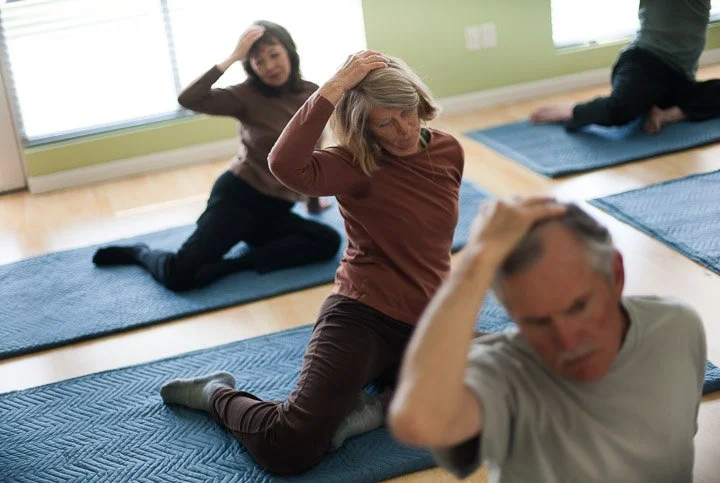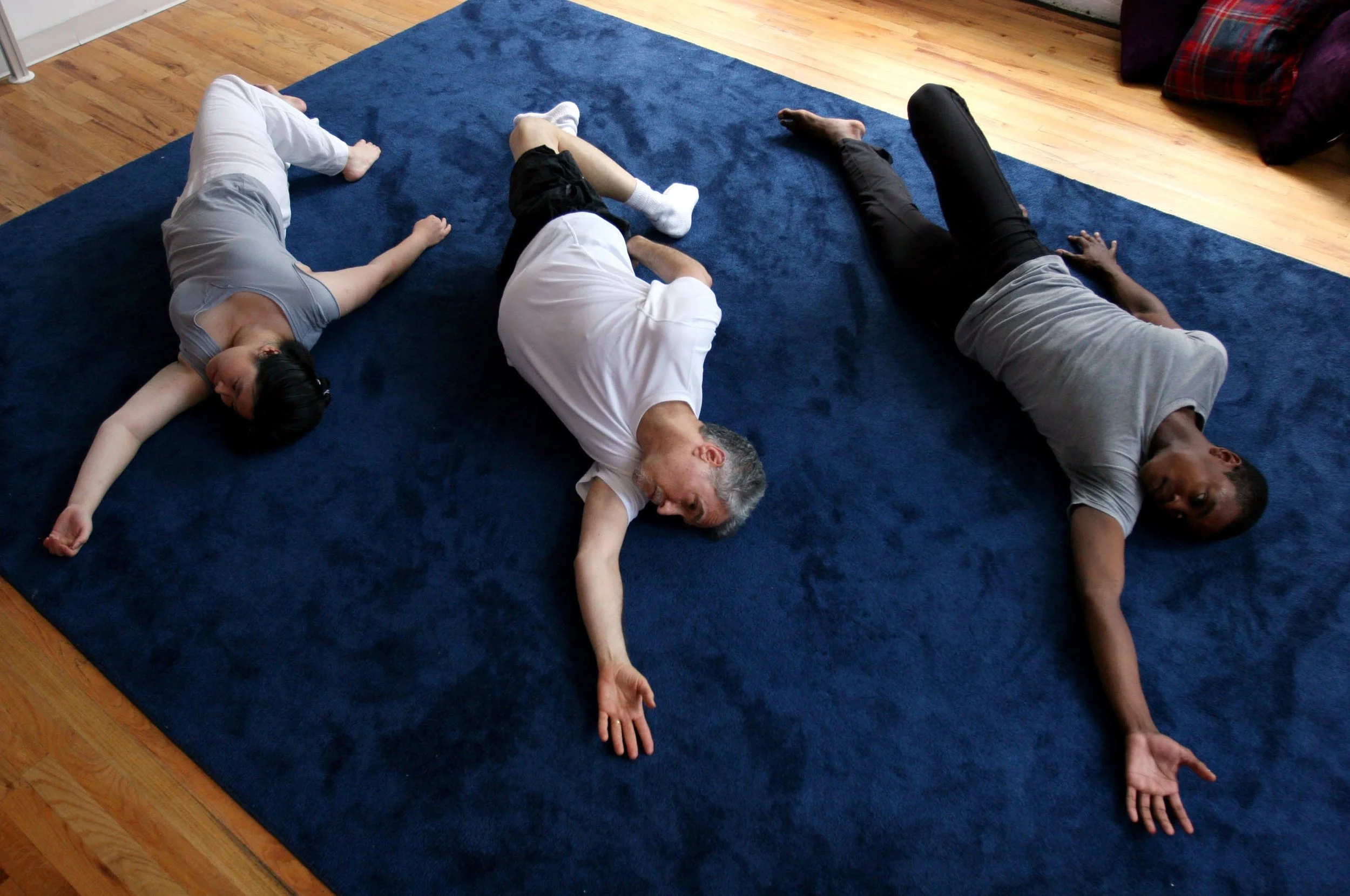In group classes, you will lie comfortably clothed on the floor on thick mats or blankets. You will be guided through a sequence of gentle yet increasingly challenging movements. All lessons are designed to be non-judgmental, non-competitive, and self-directed so that you progress at your own pace.
Don't worry about doing the movement perfectly. Just notice what you feel, because the more comfortable you are, the more naturally graceful your movement becomes.
Movements in an ATM encourage you to move beyond your compensatory habits, taking you outside your range of familiarity. As a result, they may seem puzzling at times. This is because they are new! So give yourself time to feel what happens.
Often we forget that we have spent years acquiring our quick-fire habitual responses. It is only when we slow down long enough to notice them that we can effect real change.
As you progress through the lesson, I will suggest ways that you can connect with your experience. For example, we will examine your muscle tone, breathing, and skeletal alignment as well as the shape, angle, speed, and force of your movement.
The use of your kind and uncompromising attention is a powerful tool. By giving yourself permission to feel and notice what happens as you move--not how you THINK you should move but how you DO move—you will start to learn, and learning only happens when you are kind to yourself.
Why does being curious help?
Simple: your nervous system doesn't learn if you are mean to it. Your attitude of curiosity and exploration can bring about a major change in your habitual movement and experience. Forcing movement will only reinforce your habit.
Imagine the ribs folded forward, as if you are slouching. Now imagine bringing the arms forward and up without moving the ribs. If we pull and stretch without moving the ribs, we are working against ourselves, creating patterns of co-contraction that lead to pain and injury.
Children learn to move and develop by exploring their environment, but as adults we have forgotten how to be curious. We are not going to learn something new by telling ourselves to "sit up straight!", "quit hunching!", or "pull your shoulders back!", or, "hold your head up!"
Compulsive correction diminishes our freedom. Learning happens when we move from habit into choice.
With awareness and directed attention, you can eliminate compulsive, dysfunctional strain and gain self-knowledge, choice, and spontaneity.
“For the first time in years I can reach into the cabinets on my own to put the dishes away instead of stacking them on the counter for my husband. And when my brother came to town for a visit, I was able to give him a huge bear hug! You should have seen his eyes! He couldn’t believe I could use my arms again.”
“I did it!! I walked around the museum for several hours comfortably. Thank you so much for helping me. It was a terrific day.”
“I was in the Thursday class this week for the first time. It blew me away! I have insomnia and although it isn’t mentioned as one of the things the method helps, I am guessing that it is possible it would help with that since it seems to have an impact on every aspect of health and well-being.”


